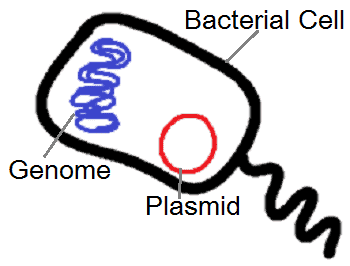A plasmid is a DNA molecule that is not chromosomal or extra-chromosomal. It is found in Bacteria and Archaea, and not essential to survival. A megaplasmid is a very large plasmid. There is no clear cutoff for judging either plasmid or megaplasmid, though 100K bp has been suggested and seems reasonable (Anton et al., 1995).
For example, Vibrio cholerae TSY216 has two chromosomes and one megaplasmid. This plasmid was likely introduced very recently and has the size of 896,006 bp. It is larger than chromosomes of some bacterial species (e.g. Mycoplasma). Please see more details about the genome of TSY216.



